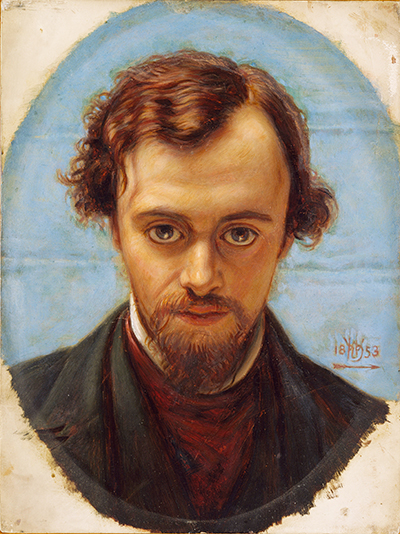The painting showcases Rossetti in his youthful years. Apparently, Hunt created the portrait in 1882 shortly after Rossetti's death and hung it in his drawing room. The piece was based on a chalk drawing of an identical size created in 1853.
The original piece was made when members of the Pre-Raphaelite Brotherhood decided to create portraits of each other to send to Thomas Woolner, their friend, who had relocated to Australia the previous year. Rossetti and Hunt created their portraits simultaneously at Millais' studio. Hunt brings out a rather unusual expression and intense gaze of his subject. He is not just looking at his friend; he is examining his subject who is caught between looking at Hunt who is sitting across from him and at his paper.
The portrait also captures Rossetti’s intense personality and charisma, which are known to be the driving force in the Pre-Raphaelite movement. The movement was formed as a form of upheaval against the entrenched codes of the Royal Art Academy. Hunt, Rossetti and Millais formed this Brotherhood which advocated for the use of a brighter, more dynamic style of painting driven by paying attention to detail. Rossetti had summarised the objectives of the Brotherhood as follows:
- Painters should have genuine ideas they want to express
- Study nature attentively to know how to articulate it on a paper
- Pay attention to what is direct, serious and heartfelt
- To produce thoroughly detailed portraits and statues
It was this movement that pioneered the use of seven truths of nature (colour, tone, skies, water, space, earth and vegetation) after Ruskin spoke profoundly about the Brotherhood’s style in a poem. It was Ruskin’s praise that made profound impact on Hunt’s painting style. From then, he adopted the principle of depicting things truthfully and morally. Until then William had been using a rather detailed and materially descriptive style. Now, he understood how that material reality was part of divine creation hence inseparable from a sacred reality.
Hunt creates the painting after Rossetti’s death as a form of tribute to his now dead friend and a reflection of when he and his close friend were young, full of energy and drive. He confessed that he created the painting at an emotional time recounting their youthful days when they were driven to oppose the then painting style reckless of other people's opinions.




